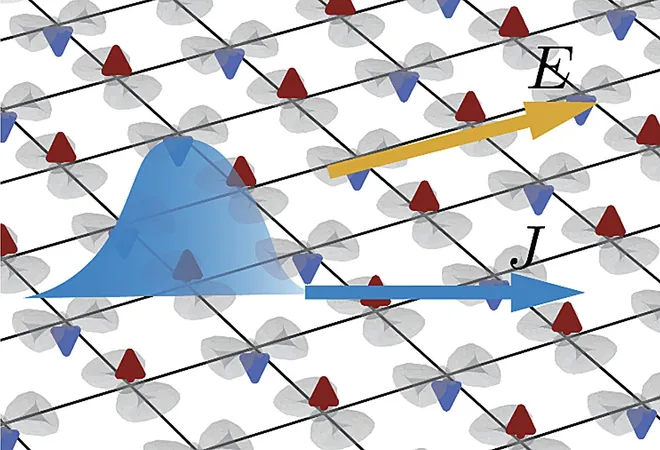
Quantum Geometry Unveils New Nonlinear Transport in Altermagnets: A Game Changer for Spintronics!
2024-10-11
Author: Yan
Introduction
In an exciting breakthrough, physicists and materials scientists are diving deep into altermagnets—a recently discovered class of magnetic materials that could revolutionize electronics and spintronic devices. Unlike traditional ferromagnets or antiferromagnets, altermagnets showcase an extraordinary type of magnetism characterized by varying electron spins that depend on momentum.
The Significance of Altermagnets
This novel property places altermagnets at the forefront of research into topological materials, which are known for their unique electronic behaviors derived from the topology of their electronic structures. Researchers at Stony Brook University have made significant strides in understanding these enigmatic materials through their recent study, published in Physical Review Letters. Their findings highlight a nonlinear response in planar altermagnets, a behavior that arises from the quantum geometry defining these materials.
Key Findings and Insights
Co-author Sayed Ali Akbar Ghorashi emphasized the importance of their work, noting, "Our exploration into these materials has brought forth more dramatic findings than we initially anticipated." The study revealed that, unlike conventional PT-symmetric antiferromagnets, which have been extensively studied, altermagnets lack such symmetry. This unique characteristic allows for distinct influences of quantum geometry on their nonlinear response, which remained largely unexplored until now.
The research team employed semiclassical Boltzmann theory to calculate contributions to the nonlinear response of altermagnets. They meticulously broke down the contributions order by order, unveiling the quantum geometric origin of each component. This thorough investigation led to the revelation that altermagnets' non-linear response is predominantly third-order due to their extraordinary spin-splitting properties.
Implications of the Research
"We have identified that altermagnets demonstrate a vanishing second-order response due to inversion symmetry. This marks them as the first class of materials where the third-order response serves as the leading nonlinear response," Ghorashi explained. Moreover, the weak spin-orbit coupling observed in these materials adds a new dimension to their transport characteristics, diverging from past research focused primarily on linear anomalous Hall conductivity.
Future Prospects
The implications of this study are profound, potentially opening up new avenues for further research into the unique properties of altermagnets. The researchers are excited about the possibilities this presents, particularly in exploring how different forms of disorder could enrich the understanding of these materials, similar to advances seen in the domain of PT-symmetric antiferromagnets.
This groundbreaking research not only enhances our understanding of altermagnets but also paves the way for innovative applications in future electronic devices, inviting scientists and tech developers to rethink the possibilities of spintronic technologies. As the team prepares for further exploration, the quantum landscape of altermagnets remains an untapped treasure trove with the potential to reshape our technological future!

 Brasil (PT)
Brasil (PT)
 Canada (EN)
Canada (EN)
 Chile (ES)
Chile (ES)
 España (ES)
España (ES)
 France (FR)
France (FR)
 Hong Kong (EN)
Hong Kong (EN)
 Italia (IT)
Italia (IT)
 日本 (JA)
日本 (JA)
 Magyarország (HU)
Magyarország (HU)
 Norge (NO)
Norge (NO)
 Polska (PL)
Polska (PL)
 Schweiz (DE)
Schweiz (DE)
 Singapore (EN)
Singapore (EN)
 Sverige (SV)
Sverige (SV)
 Suomi (FI)
Suomi (FI)
 Türkiye (TR)
Türkiye (TR)